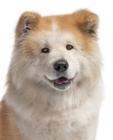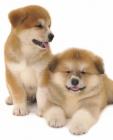Japanese Akita inu
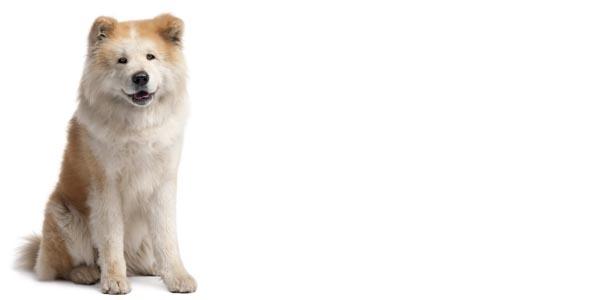
In my own words
I’m not going to lie, if you want to be the boss of me you’re going to have to prove you’ve got what it takes. One hint of weakness and I’m going to step right in and take charge of the entire household. Don’t say I didn’t warn you! Don’t be put off though, once we’ve established just who’s the alpha we’ll have an unbreakable bond.
I might be a big guy, but I’ve got a big heart to go with it you know? When it comes to my family I’m a massive softie. I love cuddling up to my owners and adore their company, especially when we’re going on a long hike to burn up some of my energy! I might not be the easiest pet to have in the world, but I’ll promise you one thing – the love and friendship I’ll give you in return is well worth the challenging training sessions and tiring daily walks.
My ideal owner(s)
Experienced dog owners
Country folk
Couples without children
People who like long walks
Hikers and ramblers
What they say about me
Stubborn
Independent
Loyal
Protective
Quiet
Please read on to find out more about me, and whether I’ll be someone you’ll be happy to live with for the next 15 years!
Is this japanese akita inu for you?
Test your knowledge about the japanese akita inu
Information essential about the Japanese Akita inu
Kennel Club Group:
Utility
Size:
Giant: Weight Male 75 – 120 lbs (34 – 54 kg) Female 75 – 110 lbs (34 – 50 kg)
Height Male 24 – 26” (61 – 66 cm) Female 24 – 26” (61 – 66 cm)
Popularity:
The Japanese Akita Inu is one of the most popular breeds of native Japanese dogs in Japan. However, in the rest of the world it is a relatively rare breed which is often confused with the Akita.
Breed History:
The Japanese Akita Inu originates from Tohuku, an area in the Akita province of Japan. While the exact origin of the Japanese Akita Inu is not clear, it is thought that the breed descended from an Ancient Japanese breed. Some experts believe that today’s Akita Inu comes from the Akita Matagi, a medium sized dog which was used in dog fights, a popular past time in Japan between the 1600s and 1800s. These dogs were primarily owned by Japan’s wealthiest and most powerful people, who would also use them as tracking dogs on hunts.
During 1783 a terrible famine came to the Akita region. The famine caused social revolt which led to many families acquiring the Akita Matagi as guard and watch dogs. The Akita Matagi was soon being bred not just for its ability to track and hunt, but also to protect. These traits have been passed on to the modern day Japanese Akita Inu.
During World War II the Japanese Akita Inu breed suffered and the numbers of the dogs diminished greatly. While many breeds suffered during the war due to a lack of breeding programs, the Japanese Akita Inu also had to struggle with famine and the capture and killing of the dogs for their coats which were given to the army for warmth. By 1945, after the war, there were less than thirty Japanese Akita Inus left in Japan. Many of the dogs had been bred with German Shepherds in order to prevent them from being killed for their furs.
A mission began to save the Japanese Akita Inu from destruction and the Akita Inu Introduction Foundation was launched to breed the remaining purebreds and return the dog to its original Japanese appearance. The resulting breed is today’s Japanese Akita Inu.
In 2005 the Japanese Akita Inu was determined as a separate breed from the Akita by the UK Kennel Club. However, there is still great confusion over the two breeds and they are frequently confused and can be wrongly registered.
Character:
The Japanese Akita Inu is independent, stubborn and wilful! He knows what he wants and he’s going to get it no matter what. A dominant dog with a strong will, this is a breed best suited to an experienced dog owner who can handle his somewhat difficult character. A Japanese Akita Inu owner needs to be confident, patient and firm with this opinionated and often bossy dog so that he knows his place in the household and doesn’t try to rule the roost. Despite their strong character and alpha personalities, the Japanese Akita Inu is a big softy towards his immediate family. While he is not usually sociable with other animals and strangers, he loves his human family with all his heart. With the right training, you’ll find your Japanese Akita Inu is loyal, obedient and willing to please. He’s a big dog and needs a lot of space to roam around, including a large, secure, fenced off garden. Your Japanese Akita Inu will appreciate plenty of toys to keep him entertained and long walks once or twice a day to burn off his abundant energy levels and keep him calm and balanced. In warmer climates, your Japanese Akita Inu will also love a good swim.
Temperament:
Although the Japanese Akita Inu is a very independent and stubborn breed, he is generally incredibly easy going and does not become over anxious or hyperactive, except when he isn’t given enough physical and mental stimulation. You’ll find that your Japanese Akita Inu is quiet and calm and doesn’t bark much. The Japanese Akita Inu makes a great watchdog as he will usually only bark when he feels it is absolutely necessary or he senses danger. He has a calm and content presence and can be wonderfully gentle and sweet. While the Japanese Akita Inu is a bit more sociable than the closely related Akita, he still tends to be aloof and wary of strangers and other dogs but will bond closely with his household. The breed is famous in Japan for being a loyal and devoted pet thank to the actions of Hachiko. Hachiko would greet his owner from work at the train station every day and accompany him home. After his owner’s death in 1925, Hachiko continued to wait at the station daily for a decade. This is testament to the love and loyalty that Japanese Akita Inus have for their owners.
Conformation:
The Japanese Akita is a large Spitz type of dog. The frame is well built and strong and slightly longer than tall. The head is broad with thick, triangular, erect ears which slope forwards, and small, almond shaped, dark brown eyes. The jaw is very strong, meeting in a scissor bite. The neck slopes to thick, strong shoulders which lead to straight forelegs. The Japanese Akita Inu’s hindquarters are muscular and stocky. The tail should be fluffy, long and curled tightly over the back. Japanese Akita Inus have a double coat which feature a soft dense undercoat and a long, coarse outer coat.
Colour:
The Japanese Akita Inu coat comes in red fawn, sesame, white and brindle with a white shade on the cheeks, muzzle, inside of the legs and under the chest, body, neck and tail. Black markings are not allowed in the show ring.
Training:
Due to the Japanese Akita Inu’s stubborn and independent nature, they can be difficult to train. It is important to thoroughly train and socialise them from an early age in order to prevent behaviour problems later in life. They need an owner who has an air of confidence and will not let the dog think that he is in charge. Positive, reward based training with a firm yet fair attitude is the best method for training your Japanese Akita Inu.
Care:
The Japanese Akita Inu does not need to be professionally clipped or timed, however they do go through heavy shedding twice per year, during which they blow their undercoat. It is particularly important to brush your Japanese Akita Inu at least once per day during these periods in order to control the shedding and minimise mess. At other times of the year a weekly brush will suffice in order to ensure the coat is healthy and tangle free. Bathing should take place only when necessary as it can damage the Japanese Akita Inu’s water resistant coat.
Health:
The Japanese Akita Inu comes from a small gene pool after the breed was nearly wiped out during the Second World War. The breed is therefore prone to some hereditary diseases including hypothyroid, autoimmune thyroiditis, hip dysplasia and entropion patella as well as knee trouble. The average lifespan of a Japanese Akita Inu is 11 to 15 years.
You may also like:
If you like Japanese Akita inus, you may like other breeds with similar characteristics »
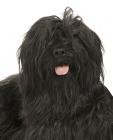
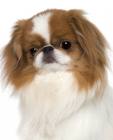
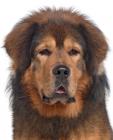
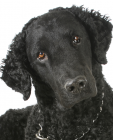
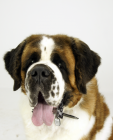
Advice on choosing your breed »
Find an animal shelter or rescue home where a Japanese Akita inu is waiting for a new home »
The following grid gives a fast track review which covers all breeds. You can apply it to help you decide if a Japanese Akita Inu is suitable for you, the environment where you live, your personality and your lifestyle. On the grid, 1 = strongly disagree, and 5 = strongly agree. For example, if you are looking for a dog that is suitable for a farm, look down the list under ‘environment’ and you will see that Japanese Akita Inus are perfect for country living, scoring 5. If you are looking for a dog that would be suitable for a first time owner, look under ‘training and obedience’ and you’ll see a Japanese Akita Inu would not be a good choice, scoring 1. You might like to save or print off this section and keep it for reference while you check some other breeds before making your choice.
Be the first to rate this breed »
|
*PLEASE NOTE: All our breed profiles are general, and all dogs are individuals. Always talk to the breeders and meet the owners you are buying from. Try to meet the dog and its parents if it is a puppy in their home environment.








